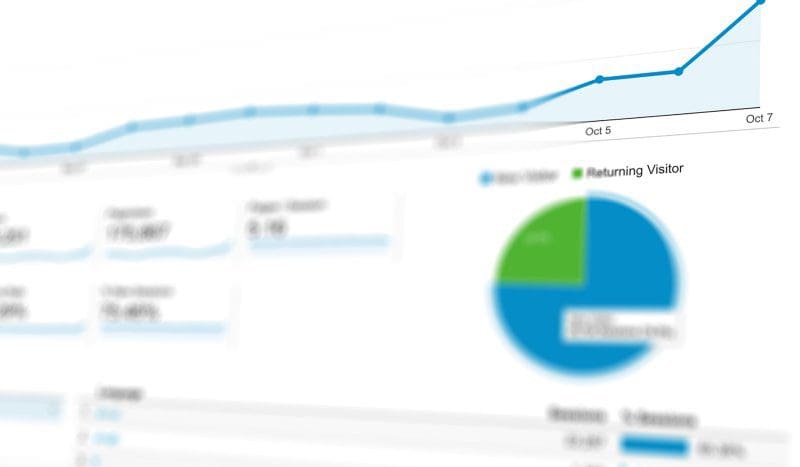The Industries That Can Benefit Most From Predictive Analytics
Predictive analytics are useful for doing all those things and more, and could increase the overall competitiveness of individual companies or entire sectors.

Predictive analytics is the process of using current sources of data to make educated assessments about future events. Although it applies to almost all industries, there are some for which it’s particularly beneficial.
1. Health Care
Medical facilities face the continual challenge of keeping operating costs manageable and improving patient outcomes. Predictive analytics can aid physicians in making correct diagnoses or determine the likely results of treatments for people with certain conditions.
A study also indicates predictive analytics could reduce emergency room wait times by up to 15 percent. For example, predictions about future visits could help shift managers make more educated decisions when putting the adequate number of employees on a schedule to deal with an anticipated rush.
2. Retail
It’s crucial for stores to keep shelves supplied with the products people want most. Otherwise, customers get frustrated and profits plummet because demand isn’t met. That’s one of the reasons why retail stores use predictive analytics in their business operations.
Similarly, the power of using big data to make predictions can help retail employees better understand what motivates customers to buy and which incentives are most likely to achieve the desired results.
3. Banking
People depend on banks when applying for loans, managing their money and planning for the future. Banking sector brands are increasingly relying on predictive analytics to improve customer service, boost efficiency and spot issues that could cause substantial problems later.
For example, fraudulent activities are costly for banks, and they adversely affect customer trust in any banking institution associated with fraud incidents. However, predictive analytics can spot characteristics associated with strange and potentially illegal customer behavior, allowing banking professionals to intervene before it’s too late.
It’s also useful when interacting with customers, such as during application screenings and cross-selling attempts, and understanding how best to encourage customer loyalty.
4. Manufacturing
Professionals in the electromechanical engineering industry often use reliability predictions to calculate the probability of system failure, incorporating characteristics including stress factors, operating environments and quality levels. Manufacturing experts often do the same by depending on predictive analytics to become aware of macshines that need maintenance or repairs before they break down and cause temporary factory floor shutdowns.
Moreover, predictive analytics provide data about future sales or output needs, giving manufacturing plant managers the insights they need to scale up operations and keep clients satisfied when requirements change.
5. Public Transportation
Statistics from the American Public Transportation Association reveal that Americans took 10.1 billion public transit trips in 2017. People depend on public transportation systems while getting to work and school, running errands around the community, or just taking trips for pleasure.
However, problems like excessive traffic, road accidents or construction, and spikes in demand can lead to slowdowns or overcapacity problems. This can cause the people who need those services to have difficulty using them and not reach their destinations on time.
Transportation officials use predictive analytics to keep things running smoothly. They might compile anonymous commuter data from people who use transit systems every day or analyze where riders are most likely to disembark and go about their days.
In the past, surveys helped transportation authorities track trends, but they typically only targeted a small number of passengers. Predictive analytics provide up-to-date information about the majority of people using a transportation network, letting representatives plan and make the necessary adjustments.
6. Cybersecurity
Establishments of all sizes must stay abreast of cybersecurity threats and work hard to reduce them. Hackers continually devise methods that are destructive to their targets and difficult to detect.
Before predictive analytics existed, organizations primarily took reactive approaches to deal with cybercriminals because they lacked useful techniques to notice attacks in advance.
However, predictive analytics have changed the game through robust, preventive measures that detect and analyze threats before they infiltrate systems — more efficiently than humans can.
When big data platforms get incorporated into companies’ cybersecurity strategies, team members spend more time doing other things, such as strengthening networks and responding promptly to suspicious activity before incidents cause substantial damage.
Because predictive analytics often make recommendations on how to improve an environment, cybersecurity professionals may become aware of vulnerabilities they hadn’t been aware of before using data-based tools.
Predictive Analytics as a Competitive Advantage
The industries above — as well as most others — succeed by understanding how to keep customers happy, meet demands, avoid problems and promote efficiency.
Predictive analytics are useful for doing all those things and more, and could increase the overall competitiveness of individual companies or entire sectors.
Bio: Kayla Matthews discusses technology and big data on publications like The Week, The Data Center Journal and VentureBeat, and has been writing for more than five years. To read more posts from Kayla, subscribe to her blog Productivity Bytes.
Related:
- 5 Key Data Science Job Market Trends
- 4 Industries Being Transformed by Machine Learning and Robotics
- 6 Reasons Why Python Is Suddenly Super Popular
